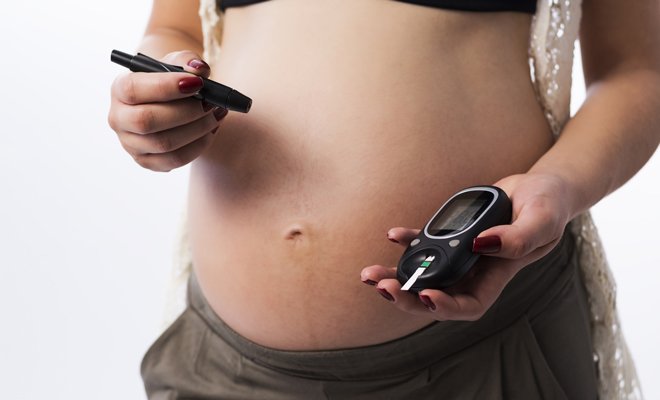During pregnancy, glucose levels must be closely controlled, otherwise gestational diabetes may occur, that is, diabetes developed during the gestation period.
Insulin (a hormone produced by the pancreas to control metabolism) is responsible for bringing sugar from the blood to the cells. Within these, glucose is stored and from there the necessary energy for the organism is obtained. When pregnancy hormones interfere with insulin, there can be an increase in glucose levels and, as a consequence, give rise to this type of diabetes in pregnancy.
In most cases there are no symptoms and it is diagnosed thanks to a test carried out between the 24th and 28th week of pregnancy. But what are the risks of gestational diabetes? What precautions must be taken so that this problem does not affect the health of the future mother and, of course, the baby? In this article we clear your doubts.
Gestational Diabetes Risks
Gestational diabetes must be controlled at all times to reduce the risks and consequences for both the mother and the baby. The first measure that is usually taken is to recommend diet and exercise (unless this cannot be done by medical prescription).
What risks can produce not controlling this pathology?
- Macrosomia’s. Your child’s pancreas produces too much insulin and the baby receives more energy than is needed. This energy accumulates in the form of fat, so it is very easy for him to be born overweight (more than 4 kg). This in turn can lead to a dangerous and difficult delivery.
- Hypoglycemia. After receiving all the glucose from the mother during pregnancy, it must now be produced by the baby on its own. However, there are times when there is too much insulin in the blood, so the baby can suffer from hypoglycemia (low glucose level). It is a common metabolic problem in newborns and can have various symptoms: vomiting, pale or bluish skin, difficulty maintaining body heat…
- Jaundice may occur. This is that both the eyes and the skin turn yellowish due to an excess of bilirubin. In these cases, it is necessary for the baby to get sunlight to speed up its elimination. Phototherapy and breastfeeding can also help to eliminate it.
- Respiratory problems, due to a delay in the development of the baby’s lungs.
- Preeclampsia. Pathology characterized by high blood pressure, excessive weight gains and excess protein in the urine.
- Miscarriages or perinatal mortality (that is, from week 28).
What precautions should we take with gestational diabetes?
- To begin with, it is important to have blood sugar under control. We can do this by measuring our levels every so often. It is important to follow the doctor’s diet, if he gives us any guidelines, and if not keep in mind that we must eat a healthy diet without saturated fats, buns, cakes, chocolate and refined sugars. You should also eliminate pre-cooked dishes. All of them are fast-absorbing foods that cause drops in glucose levels.
- It is advisable to take carbohydrates throughout the day, respecting the hours of intake that can be divided into 5: breakfast, lunch, lunch, snack and dinner.
- You can also increase the consumption of vegetables and control that of fruits since among them there are also pieces that contain simple sugars.
- You should take regular exercise very seriously. This does not mean beating up doing sports, as it can have a negative effect on our baby. You have to stay active as much as possible by doing exercises such as walking.
